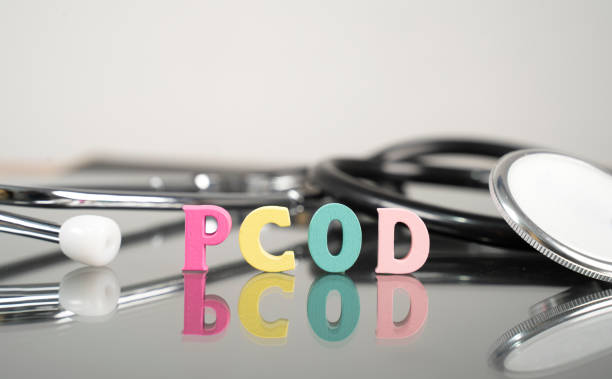What is PCOD problem in women? This is a common question among women who experience irregular periods, hormonal imbalances, and other related symptoms. Polycystic Ovarian Disease (PCOD) is a condition that affects millions of women worldwide, leading to various reproductive and health issues. In this article, we will delve deep into what PCOD is, its causes, symptoms, and treatment options, providing a comprehensive guide for those affected by or curious about the condition.
What is PCOD Problem in Women?
PCOD, or Polycystic Ovarian Disease, is a hormonal disorder that affects women of reproductive age. It is characterized by the presence of multiple cysts in the ovaries, which are small, fluid-filled sacs. These cysts develop when the ovaries produce excessive amounts of androgens, male hormones that are present in women in small amounts. This hormonal imbalance disrupts the normal menstrual cycle, leading to irregular periods or even a complete absence of menstruation.
Symptoms of PCOD in Women
Recognizing the symptoms of PCOD problem in women is crucial for early diagnosis and management. Some of the most common symptoms include:
- Irregular Periods: Women with PCOD may experience infrequent, irregular, or prolonged menstrual cycles.
- Excessive Hair Growth: This condition, known as hirsutism, leads to unwanted hair growth on the face, chest, and back.
- Acne and Oily Skin: Hormonal imbalances can cause severe acne and make the skin oily.
- Weight Gain: Women with PCOD often struggle with weight gain and find it difficult to lose weight.
- Thinning Hair: Hair loss or thinning on the scalp is another common symptom.
- Difficulty Getting Pregnant: PCOD can cause infertility due to irregular ovulation or lack of ovulation.
- Darkening of Skin: Women may notice dark patches on the skin, particularly on the neck, groin, and under the breasts.
Causes of PCOD in Women
The exact cause of PCOD problem in women remains unclear, but several factors are believed to contribute to the condition:
- Genetics: A family history of PCOD or related conditions may increase the risk of developing PCOD.
- Insulin Resistance: Many women with PCOD have insulin resistance, which can lead to higher insulin levels, causing the ovaries to produce more androgens.
- Inflammation: Chronic low-grade inflammation is common in women with PCOD, which can stimulate the ovaries to produce androgens.
- Lifestyle Factors: Obesity and a sedentary lifestyle can exacerbate the symptoms of PCOD.
Diagnosing PCOD
Diagnosing PCOD problem in women typically involves a combination of medical history, physical examination, and specific tests:
- Medical History: Your doctor will ask about your menstrual cycle, weight changes, and any symptoms you’ve noticed.
- Physical Examination: A physical exam may include checking for signs of excess hair growth, acne, and insulin resistance.
- Blood Tests: Blood tests can measure hormone levels to identify any imbalances, particularly elevated androgens.
- Ultrasound: An ultrasound can help visualize the ovaries and check for the presence of cysts.
Treatment Options for PCOD
While there is no cure for PCOD, several treatment options can help manage the symptoms and reduce the risk of complications:
Lifestyle Changes
Diet and Exercise: Maintaining a healthy weight through a balanced diet and regular exercise is one of the most effective ways to manage PCOD. Reducing weight can help lower insulin levels and regulate menstrual cycles.
Medications
Birth Control Pills: Oral contraceptives can help regulate menstrual cycles, reduce androgen levels, and alleviate symptoms like acne and excessive hair growth.
Metformin: This medication improves insulin sensitivity and can help regulate ovulation and menstrual cycles.
Fertility Treatments: For women trying to conceive, fertility treatments like Clomiphene or Letrozole may be prescribed to stimulate ovulation.
Surgical Options
Ovarian Drilling: In cases where medications are ineffective, a surgical procedure called ovarian drilling may be considered. This procedure involves making small holes in the ovary using a laser or thin heated needle to restore normal ovulation.
Managing PCOD with Home Remedies
In addition to medical treatments, certain home remedies can help manage the PCOD problem in women:
- Herbal Teas: Spearmint tea has been shown to reduce androgen levels and improve symptoms like hirsutism.
- Cinnamon: Cinnamon supplements may help regulate menstrual cycles and improve insulin resistance.
- Yoga and Meditation: Regular practice of yoga and meditation can help manage stress, which is a contributing factor to hormonal imbalances.
- Dietary Changes: Incorporating more whole foods, reducing sugar intake, and eating anti-inflammatory foods like berries, nuts, and leafy greens can improve overall health.
Complications of Untreated PCOD
If left untreated, the PCOD problem in women can lead to several complications, including:
- Infertility: Difficulty getting pregnant due to irregular ovulation is a common complication.
- Type 2 Diabetes: Insulin resistance associated with PCOD increases the risk of developing type 2 diabetes.
- Heart Disease: Women with PCOD have a higher risk of cardiovascular diseases due to associated conditions like obesity and insulin resistance.
- Endometrial Cancer: Prolonged absence of menstruation can lead to a thickening of the uterine lining, increasing the risk of endometrial cancer.
- Depression and Anxiety: The emotional impact of PCOD, coupled with physical symptoms, can lead to mental health issues.
Conclusion
Understanding what PCOD problem in women involves is the first step toward managing the condition effectively. While PCOD can be challenging to deal with, early diagnosis and a combination of lifestyle changes, medical treatments, and home remedies can help manage the symptoms and reduce the risk of complications. If you suspect you may have PCOD, consult a healthcare provider for a proper diagnosis and personalized treatment plan.

